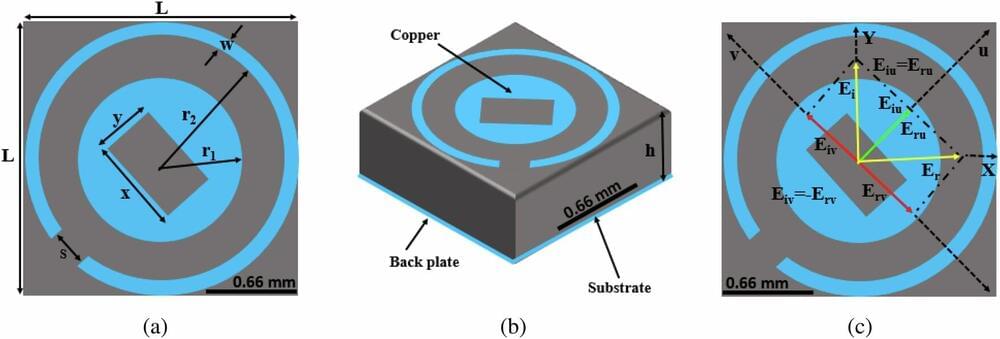At Earth.com, our goal is to provide the internet with a homepage for anything and everything about our planet Earth and the environment.


At Earth.com, our goal is to provide the internet with a homepage for anything and everything about our planet Earth and the environment.



The FBI says that 2023 was a record year for cryptocurrency fraud, with total losses exceeding $5.6 billion, based on nearly 70,000 reports received through the Internet Crime Complaint Center (IC3).
This marks a 45% increase in losses compared to the previous year, driven primarily by investment fraud, which accounted for 71% of the total cryptocurrency losses. Other types of fraud contributing to the statistics include tech support scams, call center fraud, and government impersonation.
The vast majority of the reported losses ($4.8 billion) were incurred by U.S. citizens, followed by Cayman Islands ($196M), Mexico ($127M), Canada ($72M), the UK ($59M), India ($44M), and Australia ($25M).

A new, cheap, easily manufactured device could lead to improved satellite communication, high speed data transmission, and remote sensing, scientists say.
A team of engineers led by researchers from the University of Glasgow have developed an ultrathin 2D surface that harnesses the unique properties of metamaterials to manipulate and convert radio waves across the frequencies most commonly used by satellites.
Metamaterials are structures that have been carefully engineered to imbue them with properties that don’t exist in naturally occurring materials.

But what if you’re a manufacturer without the budget, bandwidth or time to invest in advanced digital transformation right now? You can still take practical steps to move forward. Start with fundamental data collection and analytic tools to lay the groundwork. Leveraging visibility solutions like barcode scanning, wearables or other basic Internet of Things (IoT) devices can help monitor machines and provide insights and improvements.
Quality is the final piece of the equation. Once you’re further down the path to transformation, implement visibility solutions and augment and upskill workers with technology to optimize quality. To drive quality even further, add advanced automation solutions. You don’t have to boil the ocean on your digital transformation journey—take it one step at a time from wherever you’re starting.
Most manufacturers (87%) in Zebra’s study agree it’s a challenge to pilot new technologies or move beyond the pilot phase, yet they plan to advance digital maturity by 2029. With the right technology tools and solutions in place to advance visibility, augment workers and optimize quality, they will get there.

White House declares BGP security issues a national priority – BGP handles routing for the entire internet.
A Dangerous Network: The Border Gateway Protocol has been the primary routing technology for the internet for at least three decades. Like other fundamental internet protocols developed in the 1980s, BGP was not originally designed with security in mind – and it shows.
After numerous incidents related to traffic routing among different autonomous systems, the White House has decided to address the security issues of the Border Gateway Protocol. The US administration has tasked the White House Office of the National Cyber Director with developing a roadmap to enhance the security of routing procedures managed through BGP.
The venerable BGP is one of the most fundamental protocols that emerged alongside the modern internet, according to a White House press release. This standardized technology provides a practical way for over 70,000 independent networks or autonomous systems to collaborate and exchange data packets effectively. Cloud providers, internet service providers, universities, utilities, and even government agencies rely on BGP to connect the internet we know today.

Researchers at Leibniz University Hannover have developed a technology for transmitting entangled photons through optical fibers, which could enable the integration of quantum and conventional internet, promising enhanced security and efficient use of existing infrastructure.
A team of four researchers from the Institute of Photonics at Leibniz University Hannover has developed an innovative transmitter-receiver system for transmitting entangled photons via optical fiber.
This breakthrough could enable the next generation of telecommunications technology, the quantum Internet, to be routed via optical fibers. The quantum Internet promises eavesdropping-proof encryption methods that even future quantum computers cannot decrypt, ensuring the security of critical infrastructure.

Quantum Teleportation Over 44 Kilometers Achieved, Paving the Way for a Quantum Internet Revolution
A team from Fermilab and the University of Calgary has achieved long-distance quantum teleportation over 44 kilometers, setting a new record. This breakthrough, detailed in Physical Review, advances the goal of creating a quantum internet—where qubits can be shared instantly through entanglement. This new capability could revolutionize data storage, precision sensing, and computing. The research demonstrates the potential for scaling up quantum systems and contributes to developing a blueprint for a national quantum internet. The previous record was only six kilometers, highlighting the significant progress made.
Today, SpaceX took a short break from Starlink flights and launched a national security mission. Who made these satellites? SpaceX with some sensors from Northrop Grumman. It is amazing how many of the satellites that SpaceX launches are made by SpaceX!
It would be hard to make reusable rockets work if you didn’t have a ton of payloads to launch.
SpaceX launched a Falcon 9 rocket with an undisclosed number of satellites on behalf of the National Reconnaissance Office (NRO). The spacecraft, which are believed to be Starshield satellites, make up the third batch of what the NRO calls its “proliferated architecture.”